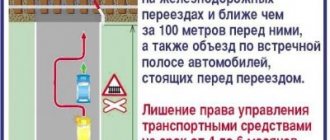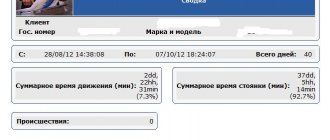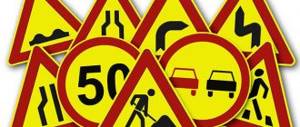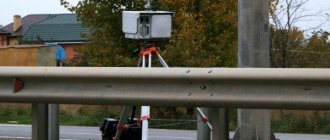How cameras work
At the moment, there are many types of cameras for video and photographic recording of traffic violations.
They vary in range, mobility, types of impairments, and so on. Some of them can only work during the day, while others can work at any time of the day. Below are the average characteristics of such cameras:
- range of fixed speeds - 20 - 250 km/h;
- overview of cameras about 10 meters wide, 8 m to 1 km long;
- File storage time is usually from 10 minutes.
There are stationary and mobile fixation stations. Stationary ones are mounted above the roadway on metal structures. To accurately measure the speed of moving cars, they are mounted in a certain position, at an angle to the road.
The camera measures the vehicle's speed between two viewpoints. Everything is calculated automatically - the time it takes the car to travel a certain distance is recorded. From which the speed with which she did it is calculated.
Errors in such cameras can occur as a result of camera misalignment. If, for example, the camera is mounted on the underside of a bridge, vibration may cause it to become dislodged over time. Accordingly, the control distance actually decreases, but the camera “does not know” about this and continues to calculate the speed from a smaller section of the road using the original parameters.
Thus, even conscientious drivers can suffer from camera displacement. To avoid such incidents, road services regularly check violation detection devices.
Mobile stations can be located anywhere on the road. They work both on the move and from a standstill. Such cameras are most often located in cars. Typically, the device detects only one lane of traffic.
Vision range of cameras installed on roads
The range of video cameras installed on Russian roads depends on several factors. One of them is the model of the device, for example, if we are talking about “Arena” and “Chris”, then their range reaches no more than 100 meters.
Devices such as “Krechet” and “Cordon” can detect violations at a distance of up to 150 meters. These video camera models are capable of simultaneously determining the speed of cars in 4 lanes at once.
A more advanced complex called “Strelka” is installed on the roads of the capital and the Moscow region. The accuracy of these devices is much higher, but they can only determine the body type at a distance of 250 to 300 meters. The device leads its “target” to the place of photographic recording. The camera only films the car at a distance of 50 meters, this is due to the limitations of the required license plate illumination at night.
The hand-held devices used by traffic police officers are capable of recording a violation 500 meters away, but the detection of the object occurs much closer.
Be that as it may, any complex installed on roads has its own operating range. Therefore, there are often warnings on highways at a distance of 150-300 meters, which allows drivers to reduce speed in time. Seeing such signs on emergency sections of roads, drivers 100 meters away begin to slow down, although the correct strategy is not to violate traffic rules.
Comments
How the system works
Cameras are installed not only on highways, but also within the city.
The device records:
- automobile;
- license plate;
- date;
- time;
- the violation itself.
It is important to know: recording the driver’s identity is not necessary - the owner of the car will receive a fine.
Violations that may be captured include:
- speeding by more than 20 km/h;
- crossing a solid marking line (entering the oncoming lane);
- driving through a prohibitory traffic light sign;
- improper parking;
- roadside travel;
- crossing the stop line.
When a violator is caught on camera, data about the violation and the vehicle are sent to the traffic police server. Inspectors, having received the information, remove controversial and low-quality photos, verify data about the vehicle and transmit the information to inspectors.
Traffic police officers re-verify the information received and impose an administrative penalty. And only after that the printed letter is packed into an envelope and sent to the place of registration of the car owner.
Even if the violation occurred in another region, you will still receive a fine. The traffic police bases are the same, so you shouldn’t relax “while visiting.”
Toyota will make the Fortuner diesel SUV more powerful and more economical. He must come to Russia
Toyota
Mobile CRIS is capable of detecting excess at a distance of up to 150 meters, but can only record the license plate number when the car approaches the lens at 50-100 meters. The complex is universal due to the possibility of installation both on a tripod and on a car. At night, an infrared sensor works, which recognizes the license plate only at a distance of up to 50 meters.
Thus, cameras recognize cars long before the driver notices it, but they record offenses only 50-100 meters away. However, the speed limit must be observed at all times, and not just when approaching photo and video recording devices. Author: Natalya Plotnikova
What should be in the letter
When you receive a fine in your mailbox, you should carefully read the contents of the envelope.
It happens that several, at first glance, identical letters arrive with the same violation. Here you should pay attention to the specified date and time of the photo. Perhaps you violated several times on one section of the road.
In this case, you should pay all fines. If the dates and times in the photographs coincide, you must contact the traffic police for clarification.
The letter must include the following information:
- car model;
- registration number;
- owner's last name;
- home address;
- date and time the violation was recorded;
- address where the violation was recorded;
- the essence of the violation itself;
- photo (possibly).
If such a resolution does not contain a photo, this does not mean that the letter can be thrown away and forgotten. It is better to immediately check for fines on the traffic police website to avoid further problems.
Permitted places
The tripod is placed:
- on road sections: 200 m in populated areas and 1000 m outside them, if 3 or more accidents with victims occurred in 12 months;
- at intersections, where over the past year there have been at least 3 accidents;
- in places with limited visibility;
- at railway crossings;
- with numerous passages along the side of the road, dividing strip;
- at positions of changing the speed mode;
- on the roadway with a dedicated lane for route vehicles;
- at intersections with pedestrian and bicycle paths;
- in places where stopping and parking are prohibited.
Photo: Instagram @sokol_rodoslav
Stationary equipment is installed on the side of the roadway, on the dividing strip, above it, in/under the road surface. The equipment is attached:
- On separate racks and frame supports.
- On elements of track structures, including tunnels and bridges.
- On poles of stationary electrical placement.
The tripod is placed on the dividing strip or to the side of it.
Stationary tech. funds are placed in accordance with GOST R57145-2016:
- at least 0.5 m from the edge of the road (or from the edge of the roadbed);
- installation height - from 1.5 m.
Mobile equipment is prohibited from being located closer than 3 m from the equipment placement point to the edge of the highway. It is allowed to use vehicles with a special tower from 0.5 m to the beginning of the curb. Portable tripods should be located at a distance of 0.5 to 2 m from the bottom edge to the road surface.
To the point! For crossing a solid line, a fine of 1,500 rubles is provided.
Use of video materials in violation
The practice of catching violators via video is widely used.
For example, any driver can record a violation on camera and send it to the traffic police. Having received the video, inspectors conduct an inspection and find the violator through a single database. After which a “letter of happiness” is generated and sent, also to the place of registration of the car owner.
This is interesting! Fine for driving into the oncoming lane: what the traffic rules say
In addition, many patrol vehicles are equipped with recording devices. Having recorded a violation, the inspectors stop the main character of the video and draw up a report.
In this case, the driver should look at the recording itself and make sure that the actions of the traffic police officers are legal. If, after viewing the recording, you still have doubts about the legality of the actions of the traffic police officers, you can challenge the protocol. To do this, you need to indicate in the document itself that you do not agree with the protocol.
Next, having received a copy of it and collected evidence of your innocence, you need to go to court. The evidence may include recordings from your dash cam and witness statements, if any.
At what distance from the car do cameras record its speed?
Modern cameras can record vehicle speed at different distances and in different ways. Therefore, pressing the brake directly in front of the camera itself is useless, since some devices can analyze signals received at different distances. It all depends on the device of the camera itself and its software.
Article on the topic When will photo recording work to detect cars that have not passed inspection?
According to the developer of GOST standards for traffic cameras, Grigory SHUKHMAN , some cameras can record speed from ten meters, while others can record speed from a distance of 500 meters. “The closest speed limit is 10 meters. This is for mobile systems that stand on tripods. Stationary cameras, including radar ones, can have a long range of up to 500 meters.”
Most speed cameras are stationary systems and are installed along the road. Nowadays, video recording devices have also begun to be actively used, which can measure the time it takes a car to travel between two or more sections, and then, based on this data, calculate the average speed. When driving past such a video surveillance system, which consists of two or more cameras, you should take into account that the average speed of a section of road will be calculated based on the time it takes to travel this section, which means you need to adhere to the speed limit throughout the entire journey. Therefore, drivers should not brake sharply in front of such cameras, as this will only create an emergency situation. As for ordinary stationary cameras, according to photo and video recording expert Sergei LASKIN , they record speed in the visibility zone at a distance of up to 50 meters.
Related news
The number of photo recording cameras on the roads of Belarus is planned to be doubled “Somewhere within the usual range of 30-50 meters. There is a certain standard, for example, the beginning of the control zone of signal detection systems, that is, the nearest traffic jam should not exceed 25 meters. But in fact, someone makes it closer, and, for example, radar systems, on the contrary, further,” says Laskin.
Today, a bill has been submitted to State Duma deputies that would prohibit fining drivers based on cameras that monitor the average speed on a stretch of road. The explanatory note to the draft amendments to the Code of Administrative Offenses indicates that motorists began to receive fines for the so-called driving at average speed, although there is no such concept in the traffic rules. According to deputies, in order to bring to administrative responsibility it is necessary to record speeding in a specific place and at a specific time.
How far can video recording cameras “see”, popular models
Their vision range depends on the technical characteristics of the cameras installed on the roads. Much depends on the year of manufacture and type of camera. Modern device models can “see” at a fairly far distance, so malicious violators are unlikely to be able to hide from video cameras. The most popular models include:
- The Strelka camera is considered one of the most popular models in Russia, and this is not surprising, since it was made on the basis of military technologies. It is installed on narrow city streets and is designed for “close-in fixation”. Its range is only 50 meters, but this is quite enough to recognize a car at speeds from 5 to 180 km/h. The error of the Strelka is 2 km/h.
- “Arena” is installed on domestic roads, and its main advantage is that it is portable. Such a camera provides visibility within a radius of 300 meters, and the moment of recording occurs no earlier than 130 meters at speeds from 20 to 250 km/h. The error of the video recording camera is 2 km/h.
- Despite the fact that the Cordon camera is not as popular as other models, it can easily be found in different parts of the country. The fixation range reaches 150 meters, and the error is 2 km/h.
- "Chris" is similar in technical characteristics to "Arena". The device is capable of detecting a violation at a distance of 100 meters. Speed measurement when driving 90 km/h occurs in 3-4 seconds, so even if you notice the camera at the last moment, you will not be able to slow down.
- "LISD-2F" - this model can be found in the southern regions of the country. The violation detection range reaches 250 meters.
There is no need to look for ways to outwit video recording cameras; it is enough just not to violate traffic rules, and for safety reasons, adhere to the speed limit.
Comments
How is an administrative penalty issued?
The speedometer instantly reacts to speeding. The result of this reaction is a high-quality snapshot with data on the speed and date of the violation. This information is redirected to the Automatic Crime Recording Center. Information is processed automatically and, if necessary, manually with the help of operators.
After verification and processing, the data goes to the traffic police server, where it is checked against their driver databases . When the identity of the offender has been revealed, within ten days a “lucky” letter is sent to him, along with the ill-fated photograph and protocol. And the car owner will either have to pay the fine or appeal in court.











